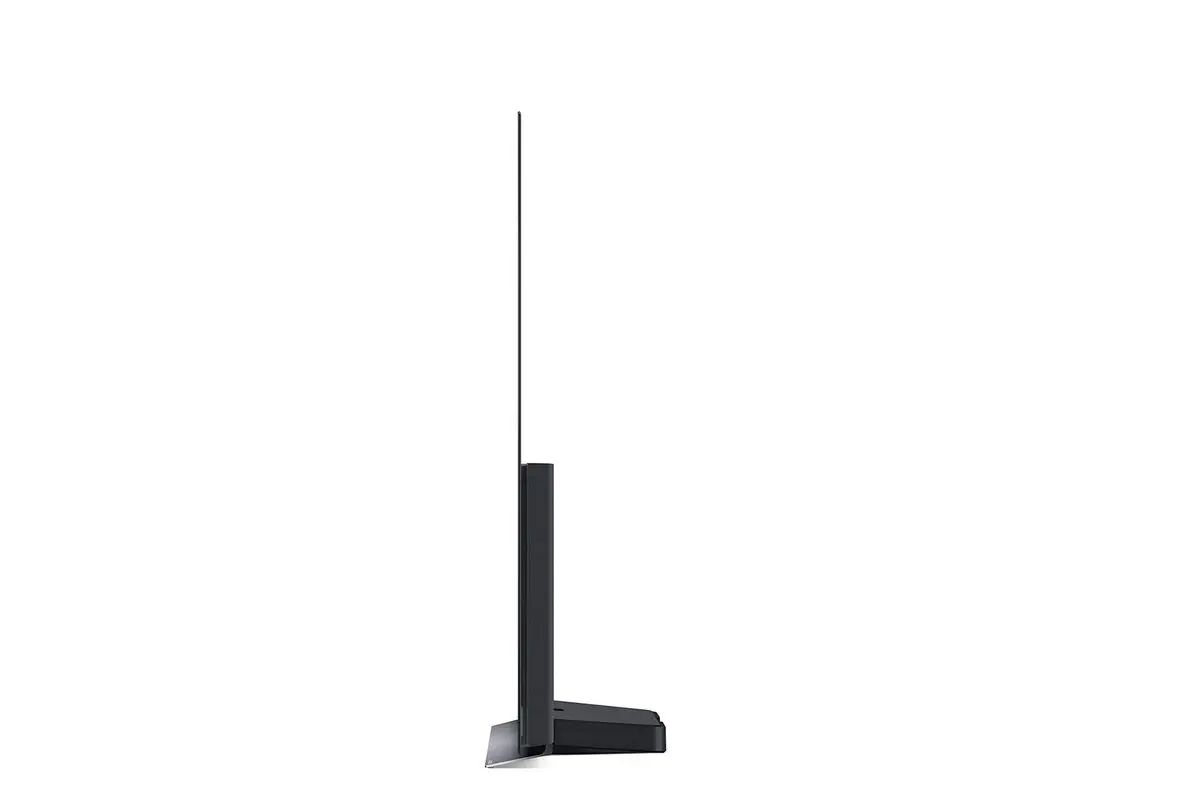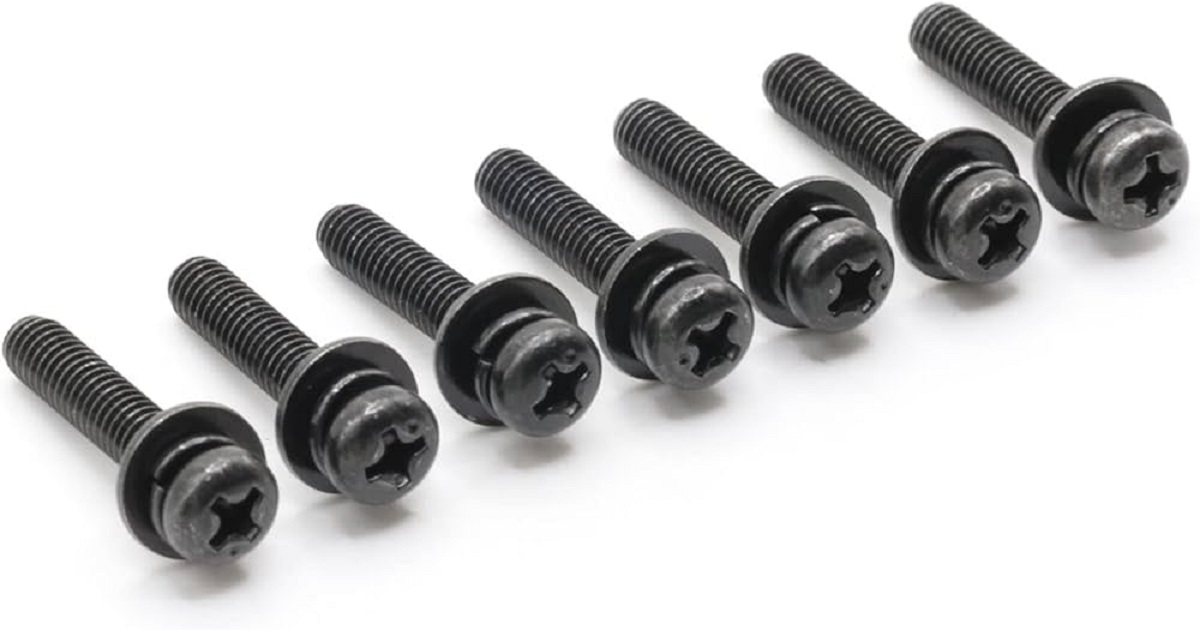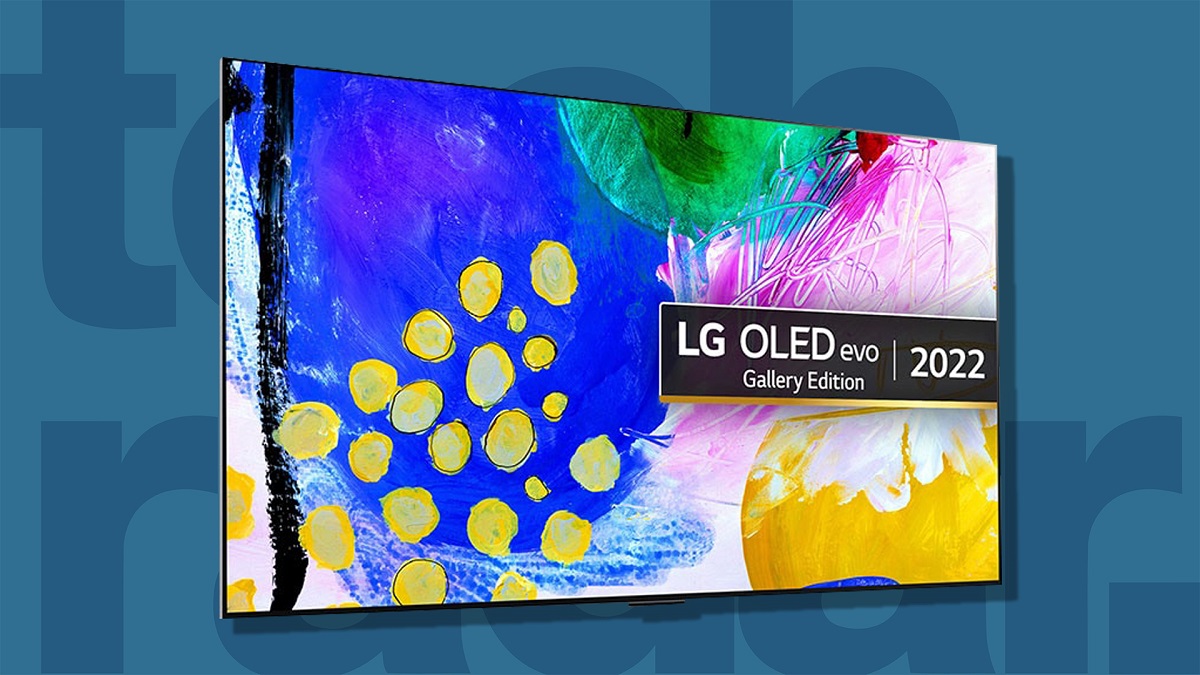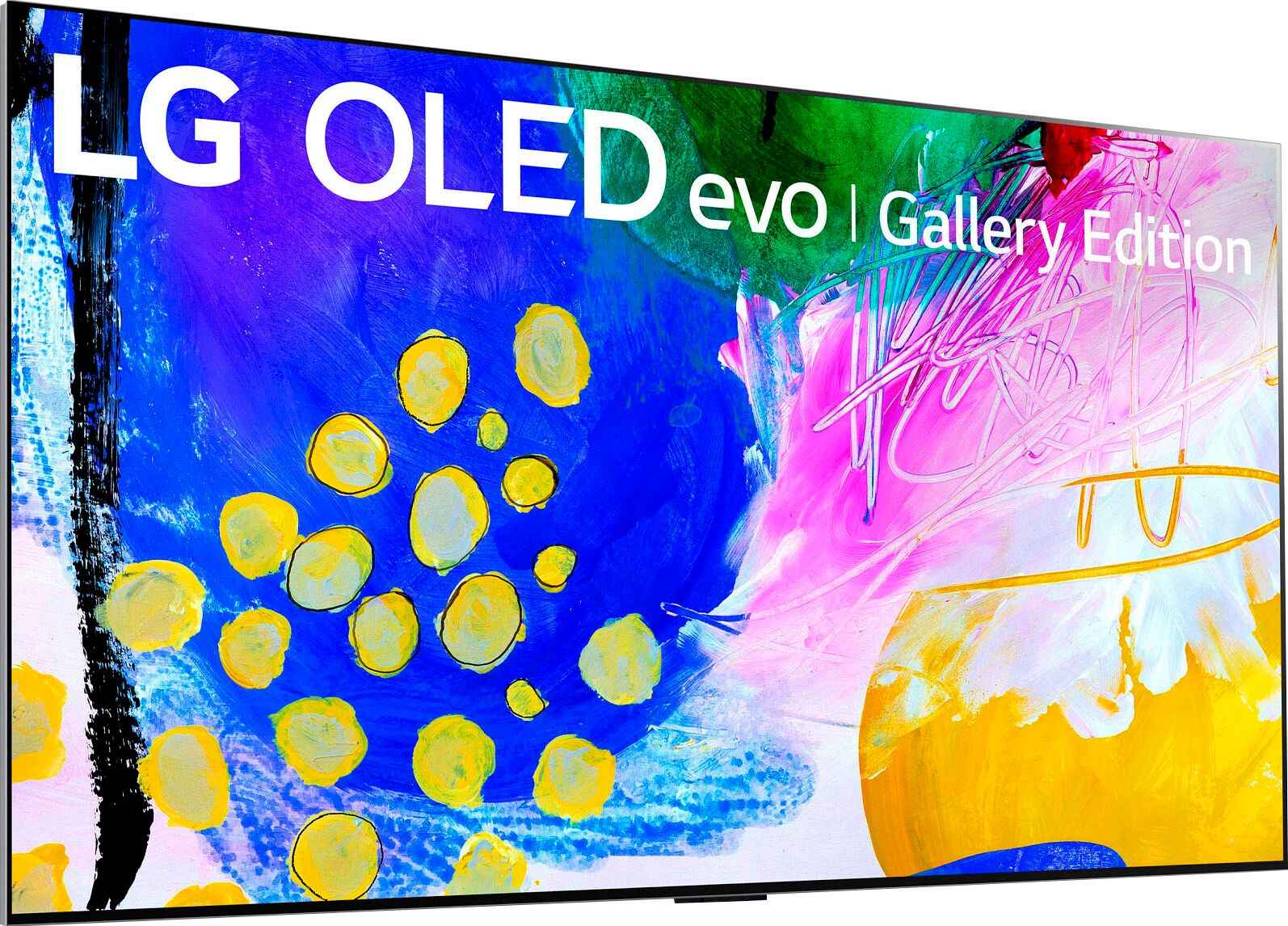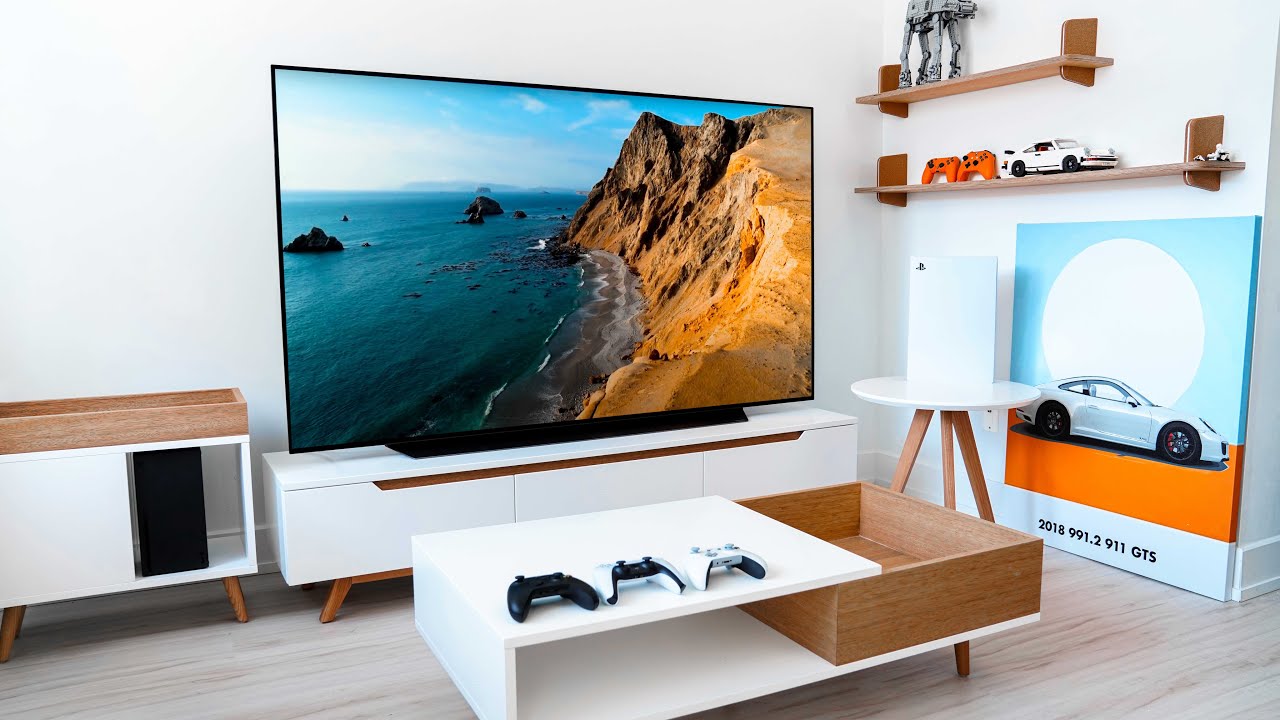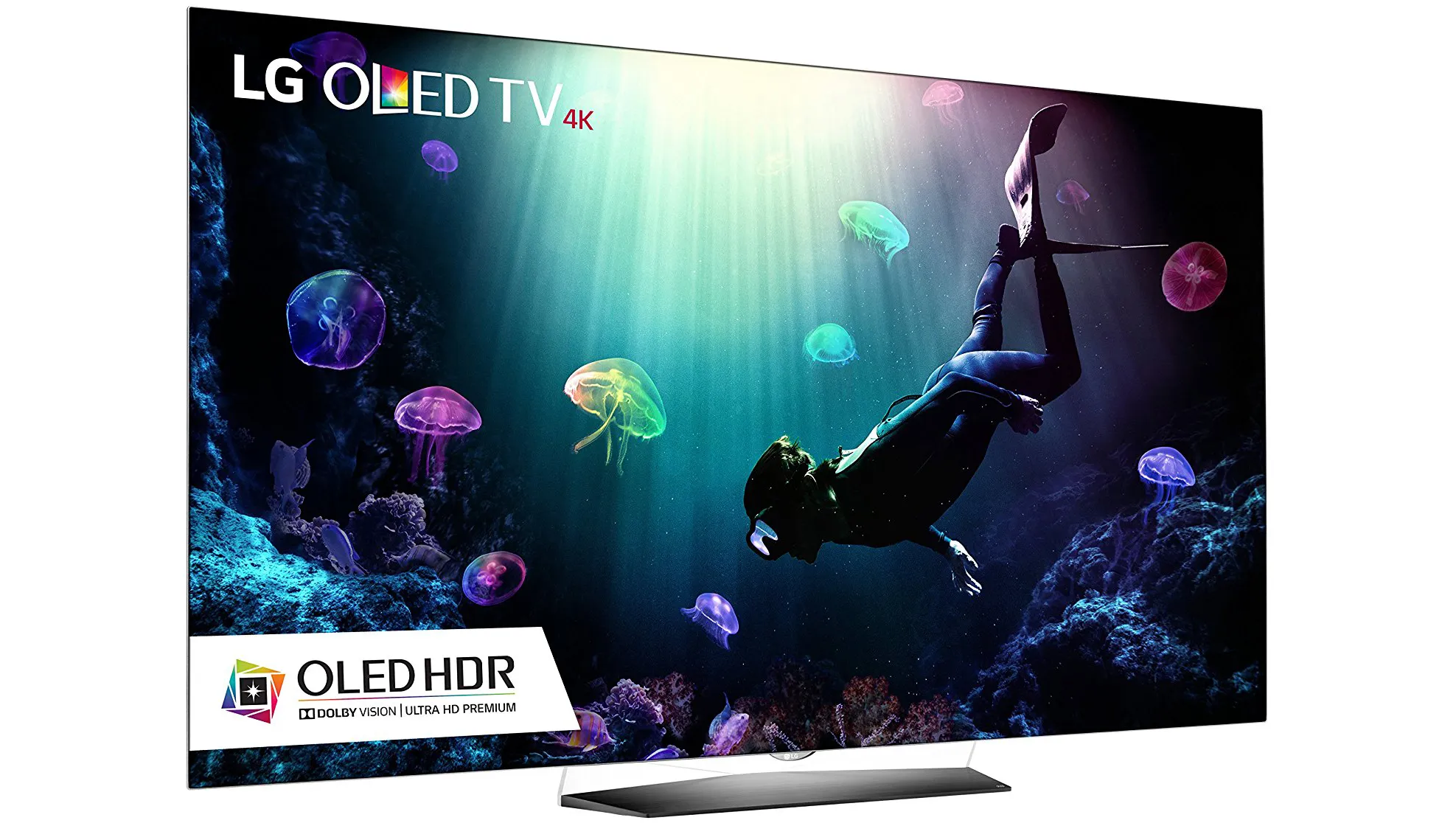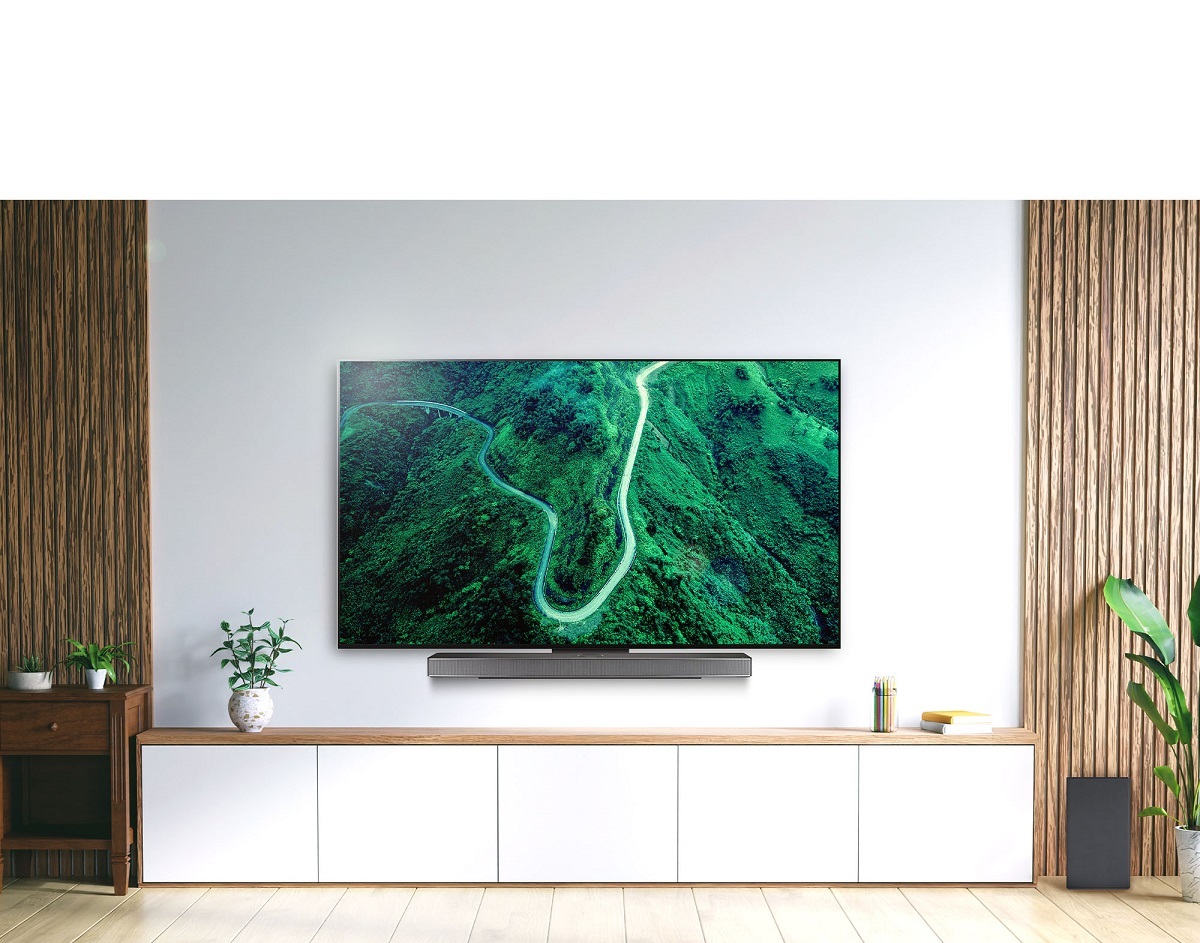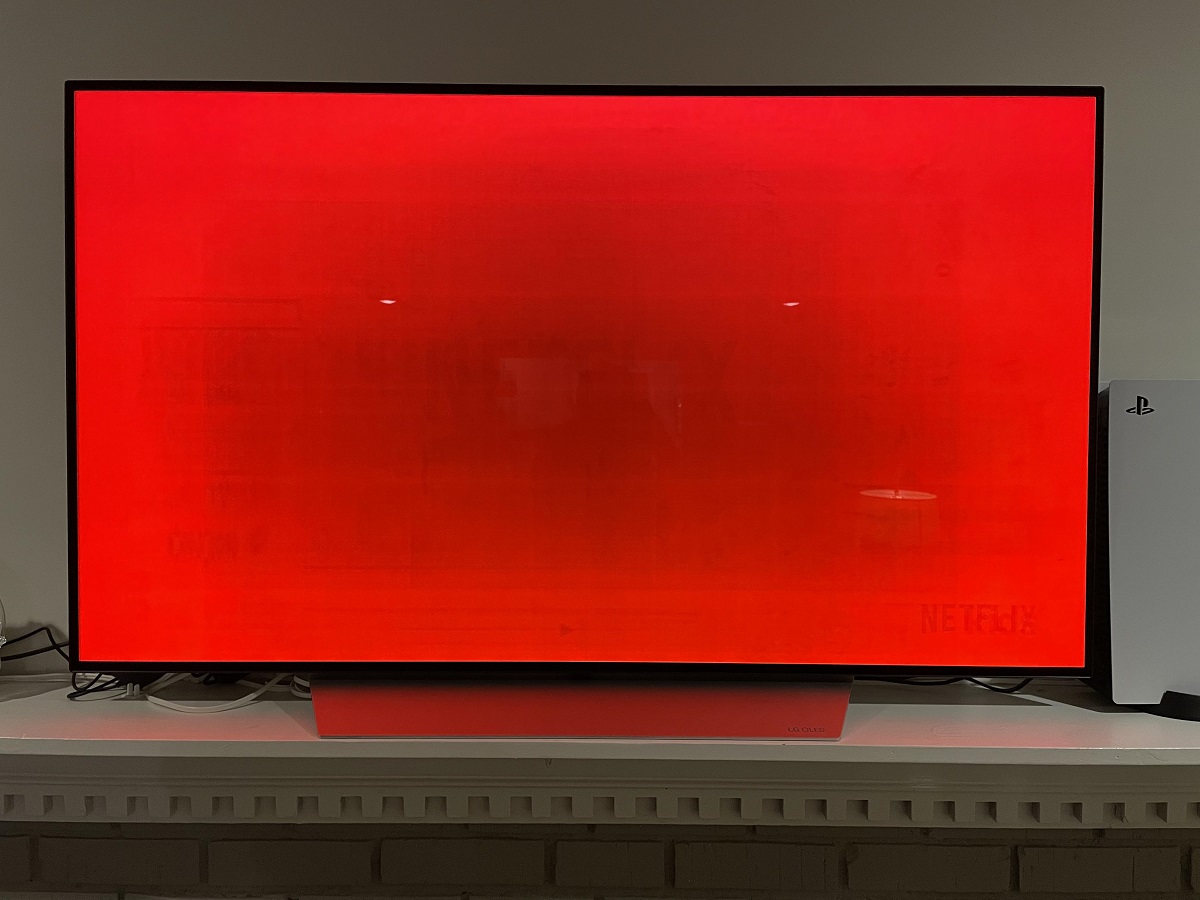Introduction
Welcome to the world of LG OLED TVs, where cutting-edge technology meets sleek design. Have you ever wondered how thin these TVs actually are? As a leader in display technology, LG has been at the forefront of innovation, constantly pushing the boundaries to deliver stunning visuals and stunningly thin screens.
OLED, short for Organic Light-Emitting Diode, is a technology that has revolutionized television displays. Unlike traditional LED or LCD screens that require a backlight, OLED panels emit light on their own, resulting in pure black levels, vibrant colors, and an unparalleled visual experience. However, it’s not just the picture quality that sets LG OLED TVs apart from the competition; it’s their impressively thin design as well.
Over the years, LG has continuously refined and improved their OLED TVs, making them thinner and more aesthetically pleasing. Gone are the days of bulky televisions dominating the living room; LG OLED TVs offer a sleek and minimalist design that seamlessly blends into any space.
One of the main advantages of thin TV design is the flexibility it provides in terms of positioning. With a slim profile, LG OLED TVs can be placed virtually anywhere in your home, without compromising the overall aesthetics of the room. You can mount it on the wall, place it on a stand, or even have it integrated into a custom cabinetry setup.
In this article, we will delve into the world of LG OLED TVs and explore just how thin these remarkable displays are. We will also take a closer look at the technology behind LG’s thin design, along with the technical specifications that make these TVs stand out. If you’re considering investing in an LG OLED TV, this article will provide you with the insight you need to make an informed decision.
Understanding OLED Technology
To truly appreciate the thinness of LG OLED TVs, it’s important to understand the technology behind them. OLED displays consist of thousands of organic compounds that emit light when an electrical current passes through them. This allows each pixel on the screen to produce its own light, resulting in stunning image quality and perfect black levels.
Unlike traditional LED or LCD screens, OLED panels don’t require a bulky backlight. This eliminates the need for a separate light source behind the screen, which in turn allows for a much thinner and more flexible design. The absence of a backlight also means that each pixel can be individually controlled, resulting in exceptional contrast and true-to-life colors.
Another advantage of OLED technology is its ability to achieve wide viewing angles. This means that no matter where you’re seated in the room, you’ll enjoy the same vibrant colors and sharp details that LG OLED TVs are known for. Whether you’re sitting directly in front of the screen or off to the side, you’ll experience a consistent and immersive viewing experience.
Additionally, OLED technology enables fast response times, which is ideal for watching fast-paced action, playing video games, or enjoying sports content. With minimal motion blur and smooth transitions, you’ll never miss out on the excitement.
It’s also worth noting that OLED panels are incredibly thin and flexible, allowing for unique curved designs and even rollable displays. LG has embraced these possibilities, introducing curved OLED TVs that wrap around the viewer for a more immersive experience, and even showcasing a rollable OLED TV that can disappear into a compact box when not in use.
Overall, OLED technology represents a major leap forward in TV displays. Its combination of vibrant colors, perfect blacks, wide viewing angles, and thin form factor makes it the display technology of choice for many discerning consumers.
The Evolution of LG OLED TVs
LG has been a pioneer in OLED technology, constantly pushing the boundaries and improving their OLED TVs over the years. Let’s take a closer look at the evolution of LG OLED TVs and how they have become the benchmark for display excellence.
LG first introduced OLED TVs to the market in 2013 with their pioneering curved designs. These early models showcased the breathtaking picture quality and thinness that OLED technology had to offer. However, at that time, OLED TVs were still relatively expensive and limited in size options.
As demand grew and technology advanced, LG worked tirelessly to improve their OLED TVs, making them more accessible and appealing to a wider range of consumers. They focused on enhancing the image quality, increasing the screen sizes, and refining the design.
Gradually, LG introduced flat OLED panels, offering a more traditional viewing experience for those who preferred a flat screen. This expansion of options demonstrated LG’s commitment to meeting the diverse needs and preferences of their customers.
In 2018, LG unveiled their flagship OLED TV, the LG OLED W8 Series, which featured an unbelievably thin profile and stunning picture quality. This model showcased LG’s continued dedication to pushing the boundaries of TV design and technology.
LG’s OLED TVs continued to evolve, with each new generation surpassing the previous one in terms of image quality, processing power, and design innovations. LG has consistently made advancements in areas such as HDR (High Dynamic Range) support, color accuracy, and motion handling, ensuring that their OLED TVs deliver the most immersive and realistic viewing experience possible.
In recent years, LG has also focused on improving the user experience by incorporating smart features and AI capabilities into their OLED TVs. With intuitive interfaces, voice control options, and seamless connectivity to other smart devices, LG OLED TVs offer a comprehensive entertainment hub.
Today, LG OLED TVs are renowned for their exceptional image quality, stunning design, and impressive thinness. They have become the go-to choice for those seeking the best-in-class visual experience in their homes.
As technology continues to evolve, LG will undoubtedly keep pushing the boundaries of what’s possible with OLED TVs, ensuring that they remain at the forefront of display innovation and continue to captivate consumers around the world.
The Benefits of Thin TV Design
The thinness of LG OLED TVs goes beyond just aesthetics; it offers a range of practical benefits that enhance the overall viewing experience. Let’s explore some of the advantages of a thin TV design.
Sleek and Minimalist
One of the most obvious benefits of a thin TV design is the sleek and minimalist look it brings to your living space. LG OLED TVs blend seamlessly into any room, adding a touch of sophistication and modernity. Whether you choose to mount it on the wall or place it on a stand, the slim profile of an LG OLED TV ensures that it doesn’t overpower the room’s décor.
Flexibility in Placement
The slim design of LG OLED TVs provides flexibility when it comes to placement options. Due to their reduced weight and thinness, these TVs are easier to mount on the wall, freeing up valuable floor space. They can be positioned at the optimal eye level for comfortable viewing, giving you a truly immersive cinematic experience.
Seamless Integration
With their thin profile, LG OLED TVs can seamlessly integrate into your existing home theater setup. Whether you have a custom entertainment center or cabinetry, the thin design allows for precise fitting and integration without compromising the overall aesthetics.
Enhanced Interior Design
Thick, bulky TVs of the past often clashed with the interior design of a room, disrupting the harmony. The thin design of LG OLED TVs eliminates this issue, allowing the TV to complement the surroundings rather than dominating them. Now you can enjoy your favorite shows and movies without compromising the overall design and ambiance of your space.
Portable and Versatile
The thinness of LG OLED TVs makes them lightweight and portable. If you decide to rearrange your living space or move to a new home, you can easily transport and set up your OLED TV without much hassle. Their slim profile also makes them suitable for various environments such as bedrooms, offices, or even outdoor entertainment areas.
Reduced Glare
A thin TV design helps to minimize glare, ensuring a better viewing experience. With a slimmer profile, there is less surface area for light to reflect off, resulting in clearer and more immersive visuals. This is especially beneficial when watching TV in brightly lit rooms or rooms with windows.
Overall, the thin design of LG OLED TVs offers a range of benefits, from enhancing the overall aesthetics of your space to providing flexibility in placement and integration. By choosing an LG OLED TV, you not only elevate your viewing experience but also elevate the style and functionality of your home.
How LG Achieves Thinness in their OLED TVs
LG has mastered the art of achieving remarkable thinness in their OLED TVs through a combination of innovative engineering and design. Let’s take a closer look at the techniques and technologies that LG utilizes to achieve their ultra-thin OLED TVs.
Advanced OLED Panel Technology
At the heart of LG’s thin OLED TVs is the advanced technology used in their OLED panels. These panels are made up of a series of organic layers that emit light when an electric current is passed through them. This allows for individual pixel control and eliminates the need for a separate backlight, resulting in a thinner and more efficient design.
Slim Backend Electronics
In addition to the thin OLED panels, LG focuses on reducing the thickness of the backend electronics that power their TVs. Through innovative engineering and component miniaturization, LG ensures that the electronic components are as slim as possible without sacrificing performance or reliability.
Integrated Power Supply
To further reduce the thickness of their OLED TVs, LG integrates the power supply into the TV itself. This eliminates the need for a bulky external power brick, resulting in a cleaner and more streamlined design. The integrated power supply contributes to the overall slim profile of the TV, making it easier to mount or place in any room.
Thin Bezel Design
LG pays attention to every detail, including the bezel surrounding the screen. By minimizing the bezel width, LG creates a sleek and frameless design that maximizes the screen-to-body ratio, providing a more immersive viewing experience. The thin bezel design further emphasizes the thinness of the OLED panel itself.
Lightweight Materials
LG utilizes lightweight materials in the construction of their OLED TVs without compromising on durability or stability. By using materials with high strength-to-weight ratios, LG achieves a thinner and lighter overall structure, making the OLED TV easier to handle and mount.
Efficient Heat Dissipation
Heat dissipation is a crucial factor in maintaining the slimness and performance of OLED TVs. LG incorporates advanced cooling technologies to efficiently dissipate heat generated by the OLED panel and electronics. This ensures that the TV remains cool and stable, allowing for reliable operation even in slim form factors.
Innovative Mounting Options
To enhance the slimness of their OLED TVs, LG offers innovative mounting options. These include ultra-slim wall mounts that allow the TV to be mounted flush against the wall, minimizing the gap between the TV and the wall. LG also provides flexible mounting solutions that cater to various installation preferences, ensuring a seamless integration into any space.
Through a combination of advanced OLED panel technology, slim backend electronics, integrated power supply, thin bezel design, lightweight materials, efficient heat dissipation, and innovative mounting options, LG achieves impressive thinness in their OLED TVs. This commitment to thin design not only enhances the overall aesthetic appeal but also provides greater versatility and ease of installation for consumers.
The Technical Specifications of LG OLED TVs
LG OLED TVs are not only known for their thinness but also for their impressive technical specifications. These specifications contribute to the outstanding picture quality and immersive viewing experience that LG OLED TVs are renowned for. Let’s dive into the key technical features that set LG OLED TVs apart.
OLED Display Technology
The use of OLED display technology is the foundation of LG OLED TVs. Each pixel in an OLED panel can emit light individually, resulting in perfect black levels, infinite contrast ratios, and vibrant colors. This technology allows for a superior picture quality that captures every detail with astonishing clarity.
Resolution and Screen Size
LG offers a wide range of OLED TVs with varying resolutions and screen sizes to suit different viewing preferences. They offer models with 4K UHD resolution, which provides exceptional detail and sharpness, as well as models with 8K resolution, delivering an incredibly lifelike viewing experience. OLED TVs are available in sizes ranging from 48 inches to 88 inches, ensuring there’s an option for every room size and viewing distance.
High Dynamic Range (HDR)
LG OLED TVs support various HDR formats, including HDR10, Dolby Vision, and HLG (Hybrid Log-Gamma). HDR enhances the contrast and color accuracy of the TV, allowing for a more dynamic and realistic image. With HDR, you’ll experience brighter highlights, darker shadows, and a broader range of colors, resulting in a truly immersive viewing experience.
Refresh Rate and Response Time
The refresh rate of an OLED TV determines how smoothly fast-moving content is displayed on the screen. LG OLED TVs typically have a high refresh rate of 120Hz or above, ensuring smooth motion for fast action scenes and gaming. In addition, OLED technology enables extremely fast response times, minimizing motion blur and delivering crisp and clear visuals, even during high-speed sequences.
Smart Features and Operating System
LG OLED TVs come equipped with smart features and an advanced operating system. LG’s webOS platform offers a user-friendly interface and seamless integration with popular streaming services, allowing you to access your favorite content with ease. The TVs also provide voice control options, enabling hands-free navigation and control of the TV using voice commands.
Sound Quality and Audio Features
LG OLED TVs deliver an immersive audio experience to match their stunning visuals. Many models feature built-in speakers with technologies like Dolby Atmos, AI Sound, and sound optimization, providing a rich and cinematic soundstage. Some models also offer HDMI eARC support, allowing for uncompressed and high-quality audio output to compatible sound systems.
Connectivity and Ports
LG OLED TVs offer a wide range of connectivity options to accommodate various devices and peripherals. They typically include multiple HDMI ports for connecting gaming consoles, Blu-ray players, or sound systems. USB ports, Ethernet, Wi-Fi, and Bluetooth connectivity are also available, enabling seamless integration and wireless connectivity with other devices.
These technical specifications contribute to the exceptional performance and immersive viewing experience that LG OLED TVs provide. Whether you’re a cinephile, a gamer, or someone seeking the best visual experience, LG OLED TVs deliver on both form and function.
Comparing Thickness: LG OLED vs. Other TV Technologies
When it comes to thinness, LG OLED TVs truly excel. Let’s compare the thickness of LG OLED TVs with other popular TV technologies to see how they stack up.
LED and LCD TVs
LED and LCD TVs are commonly found in households around the world. These TVs typically have a thick design due to the required backlighting technology. The backlight is positioned behind the LCD panel and illuminates the pixels on the screen. As a result, LED and LCD TVs tend to be bulkier compared to LG OLED TVs.
The thickness of LED and LCD TVs can vary depending on the model and size, but they generally have a depth of several inches. While advancements have been made to reduce the thickness in recent years, LG OLED TVs still maintain a significant advantage in terms of slimness.
QLED TVs
QLED TVs, which utilize Quantum Dot technology, have become a popular choice for those seeking vibrant colors and high brightness levels. While QLED TVs offer excellent picture quality, they still require a backlight, similar to LED and LCD TVs, resulting in a thicker design compared to LG OLED TVs.
As with LED and LCD TVs, the thickness of QLED TVs can vary depending on the model and size. However, the average thickness of QLED TVs is comparable to LED and LCD TVs, typically measuring a few inches in depth.
Plasma TVs
Plasma TVs were once highly regarded for their deep blacks and outstanding color reproduction. However, plasma TVs have become less common in the market, and their thickness was often a point of concern for consumers.
Plasma TVs tended to be bulkier compared to other TV technologies due to the use of phosphor-based displays. The average thickness of a plasma TV was around several inches or more, making them thicker than both LG OLED and newer LED/LCD TVs.
LG OLED TVs
LG OLED TVs are known for their exceptional thinness. Thanks to the unique OLED technology, which eliminates the need for a backlight, LG OLED TVs are significantly thinner than LED, LCD, QLED, and plasma TVs.
The precise thickness of LG OLED TVs can vary depending on the model and screen size. However, on average, LG OLED TVs have a depth of less than an inch, making them sleek and slim. Some of LG’s flagship OLED models may be slightly thicker due to the incorporation of additional features or enhanced audio systems, but they still maintain an impressive thinness.
In summary, when comparing LG OLED TVs to other TV technologies, including LED, LCD, QLED, and plasma, it’s clear that LG OLED TVs stand out with their remarkably thin design. Their slim profile adds a touch of elegance to any space and allows for versatile installation options.
Tips for Mounting or Placing an LG OLED TV
Mounting or placing an LG OLED TV requires careful consideration to ensure optimal viewing angles, safety, and a clean installation. Here are some helpful tips to keep in mind when mounting or placing your LG OLED TV:
1. Determine the Viewing Location
Start by selecting the ideal location for your LG OLED TV. Consider factors such as viewing distance, lighting conditions, and the overall layout of the room. Aim for a spot where the TV is easily visible from your preferred seating position, while minimizing glare and reflections from windows or light sources.
2. Choose a Suitable Mounting Option
If you prefer a wall-mounted setup, select a compatible wall mount that supports the weight and size of your LG OLED TV. Ensure that the wall mount is securely attached to a stud or a strong wall surface for stability. Follow the manufacturer’s instructions carefully during installation.
3. Verify VESA Mount Compatibility
LG OLED TVs typically have VESA mount compatibility, which ensures compatibility with a wide range of wall mounts. Ensure that the VESA mount pattern of your TV matches the specifications of the wall mount you intend to use.
4. Mind the Cables
Plan cable management ahead of time to keep the area around your LG OLED TV tidy and clutter-free. Utilize cable management solutions such as cable raceways, cable clips, or in-wall cable routing to conceal and organize the various cables connected to your TV.
5. Follow Recommended Viewing Angles
Mount or position your LG OLED TV in a way that provides optimal viewing angles for the best picture quality. The general rule of thumb is to mount the TV at eye level or slightly above, with the center of the screen aligned with your eye level when seated.
6. Consider Swivel or Articulating Mounts
If you want the flexibility to adjust the viewing angle of your LG OLED TV, consider swivel or articulating wall mounts. These mounts allow you to tilt, swivel, or extend the TV, offering a wider range of viewing options to accommodate different seating positions or to avoid glare.
7. Ensure Proper Ventilation
Adequate ventilation is essential to prevent overheating and ensure optimal performance of your LG OLED TV. Allow sufficient space between the TV and the wall or any cabinetry to promote proper airflow. Avoid enclosing the TV in a tight space that restricts ventilation.
8. Avoid Direct Sunlight
When placing your LG OLED TV, avoid direct exposure to sunlight. Sunlight can cause glare on the screen and potentially affect the image quality. If sunlight cannot be avoided, consider using curtains, blinds, or other window treatments to minimize the impact.
9. Seek Professional Installation
If you are unsure about the installation process or have specific requirements, it is advisable to seek professional installation services. They have the experience and expertise to mount or place your LG OLED TV securely and ensure optimal positioning.
By following these tips, you can ensure a safe and visually pleasing installation of your LG OLED TV, enhancing your viewing experience and maximizing the benefits of its sleek design.
The Future of Thin LG OLED TVs
The thinness of LG OLED TVs has already reached impressive levels, but the future holds even greater potential. As technology continues to advance, we can expect further innovations and advancements in the pursuit of thinner and more visually stunning LG OLED TVs.
Advancements in OLED Technology
LG is at the forefront of OLED technology, constantly researching and developing new techniques to improve their OLED panels. We can anticipate advancements in materials, manufacturing processes, and pixel designs that will result in even thinner OLED TVs. These advancements will not only enhance the slimness but also improve aspects such as brightness, color accuracy, and energy efficiency.
Flexible and Rollable OLED Displays
The future of LG OLED TVs may involve flexible and rollable displays. LG has already showcased rollable OLED TV prototypes, where the screen can be rolled up or hidden away when not in use. Such advancements will allow for even more versatile installation options and storage convenience, further revolutionizing the concept of TV form factors.
Advances in Materials and Components
Research on new materials and components for TV displays is active, and this will likely contribute to the future slimness of LG OLED TVs. Lightweight and flexible materials, as well as smaller and more efficient components, will enable thinner and lighter TV designs without sacrificing performance or durability.
Integration of AI and Smart Features
LG OLED TVs are progressively becoming more than just displays. The integration of artificial intelligence (AI) and smart features opens up possibilities for enhanced user experiences and seamless integration with other smart devices. The future of thin LG OLED TVs may see further advancements in AI capabilities, creating a connected ecosystem that delivers personalized content and improved control.
Further Focus on Aesthetics
Thinness not only improves the functionality of LG OLED TVs but also complements the aesthetics of modern living spaces. LG will likely continue to prioritize sleek and minimalist designs, incorporating premium materials and refined finishes to create a visual appeal that effortlessly blends with any interior décor.
Collaboration with Designers
Collaborations between LG and renowned designers or architects may also shape the future of thin OLED TVs. These partnerships could bring fresh perspectives and innovative concepts to further enhance the aesthetics and functionality of LG OLED TVs, pushing the boundaries of design and thinness even further.
In summary, the future of thin LG OLED TVs is incredibly promising. Advancements in OLED technology, the development of flexible and rollable displays, advances in materials and components, integration of AI and smart features, a continued focus on aesthetics, and collaborations with designers all indicate that thinner and more visually stunning LG OLED TVs are on the horizon. As technology progresses, we can look forward to a new era of TV designs that will revolutionize how we experience entertainment in our homes.
Conclusion
LG OLED TVs have redefined what it means to have a thin and visually stunning television. Through their pioneering OLED technology, LG has achieved remarkable thinness without compromising on picture quality or functionality. The evolution of LG OLED TVs has brought us sleek designs, exceptional image quality, and an immersive viewing experience.
Understanding the technology behind OLED displays allows us to appreciate the advantages they offer over other TV technologies. The thin design of LG OLED TVs not only enhances the overall aesthetics of a room but also provides flexibility in placement and integration. We have explored the various techniques that LG employs to achieve their incredible thinness, such as advanced OLED panel technology, slim backend electronics, integrated power supply, thin bezel design, lightweight materials, efficient heat dissipation, and innovative mounting options.
Comparing LG OLED TVs with other technologies like LED, LCD, QLED, and plasma TVs reveals their superiority in terms of slimness. LG OLED TVs significantly outshine their counterparts, thanks to their OLED technology, which eliminates the need for a separate backlight, resulting in an impressively thin profile.
When it comes to mounting or placing an LG OLED TV, there are important considerations. Selecting the right viewing location, choosing suitable mounting options, minding the cables, following recommended viewing angles, ensuring proper ventilation, and avoiding direct sunlight are essential for the best viewing experience.
The future of thin LG OLED TVs holds even more exciting possibilities. Advancements in OLED technology, the development of flexible and rollable displays, advancements in materials and components, integration of AI and smart features, and a continued focus on aesthetics are just some of the areas where LG will continue to innovate and improve.
In conclusion, LG OLED TVs stand as the epitome of thinness and visual excellence in the TV industry. As LG continues to push the boundaries of what’s possible, we can expect even thinner and more breathtaking OLED TVs that will transform our viewing experiences for years to come.







